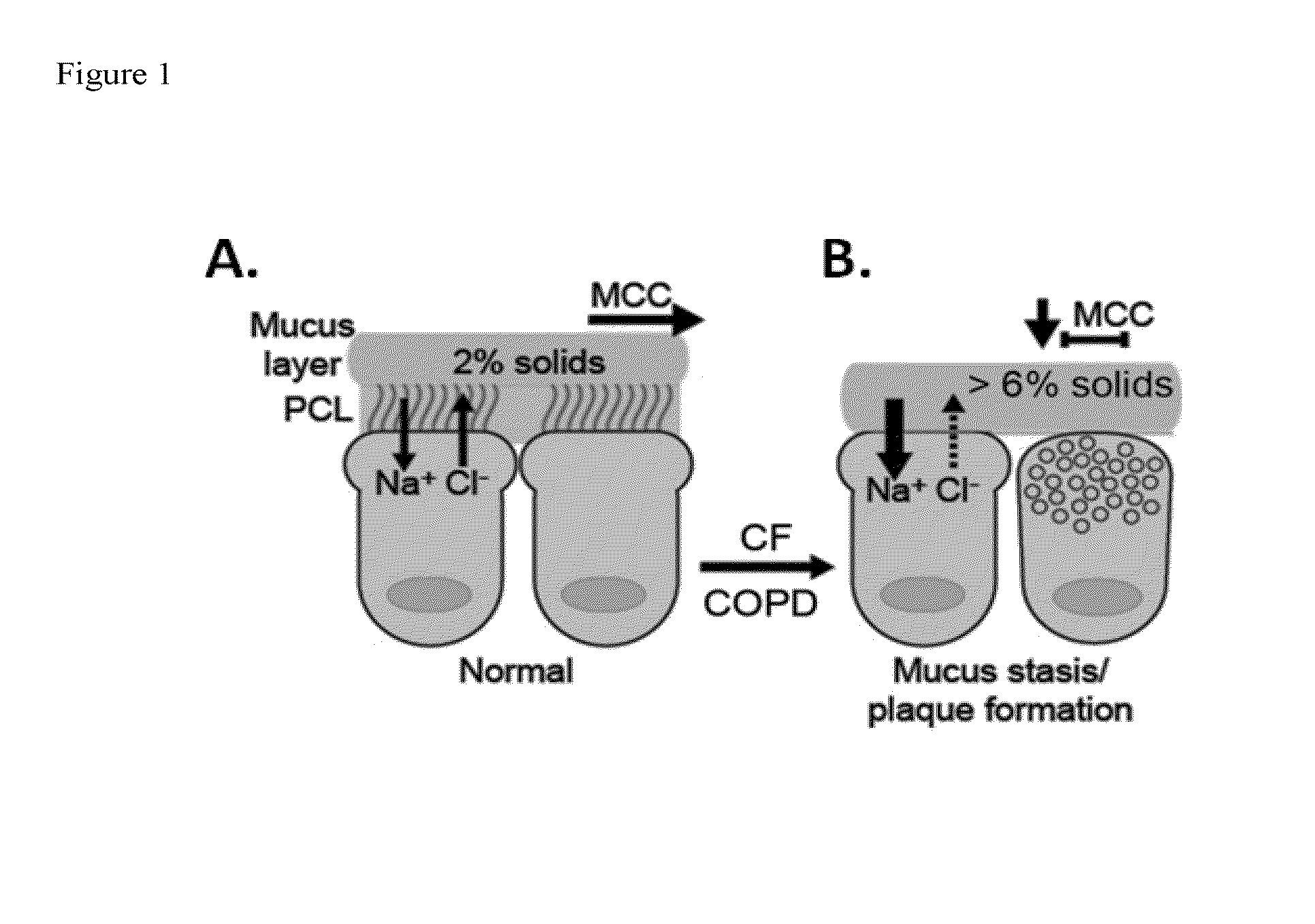Dithiol mucolytic agents
a technology of dithiol and mucolytic agent, which is applied in the direction of amide active ingredients, drug compositions, and delivery of aerosols, can solve the problems of airway mucus accumulation and infection, failure to clear airway mucus from the surface, and initiating problems, so as to increase the liquefaction of mucus, increase the viscoelastic, cohesive or adhesive properties, and reduce the viscoelasticity of mucus
- Summary
- Abstract
- Description
- Claims
- Application Information
AI Technical Summary
Benefits of technology
Problems solved by technology
Method used
Image
Examples
Embodiment Construction
[0141]As used herein, the following terms are defined as indicated.
[0142]“A compound of the invention” means a compound of Formula I or a salt, particularly a pharmaceutically acceptable salt thereof.
[0143]“A compound of Formula I” means a compound having the structural formula designated herein as Formula I. Compounds of Formula I include solvates and hydrates (i.e., adducts of a compound of Formula I with a solvent). In those embodiments wherein a compound of Formula I includes one or more chiral centers, the phrase is intended to encompass each individual stereoisomer including optical isomers (enantiomers and diastereomers) and geometric isomers (cis- / trans-isomerism) and mixtures of stereoisomers. In addition, compounds of Formula I also include tautomers of the depicted formula(s).
[0144]Throughout the description and examples, compounds are named using standard IUPAC naming principles, where possible, including the use of the ChemDraw Ultra 11.0 software program for naming com...
PUM
 Login to View More
Login to View More Abstract
Description
Claims
Application Information
 Login to View More
Login to View More - R&D
- Intellectual Property
- Life Sciences
- Materials
- Tech Scout
- Unparalleled Data Quality
- Higher Quality Content
- 60% Fewer Hallucinations
Browse by: Latest US Patents, China's latest patents, Technical Efficacy Thesaurus, Application Domain, Technology Topic, Popular Technical Reports.
© 2025 PatSnap. All rights reserved.Legal|Privacy policy|Modern Slavery Act Transparency Statement|Sitemap|About US| Contact US: help@patsnap.com



